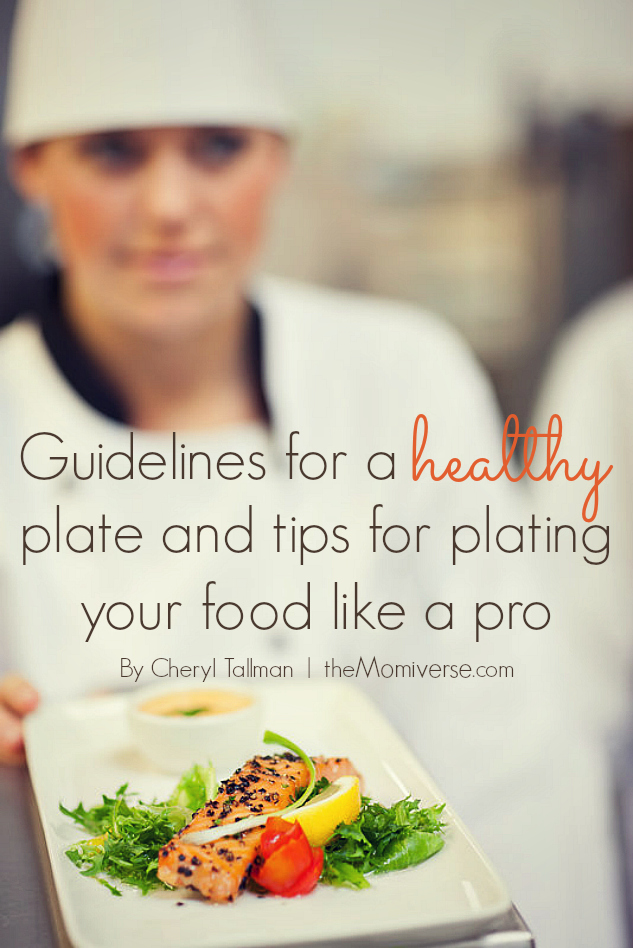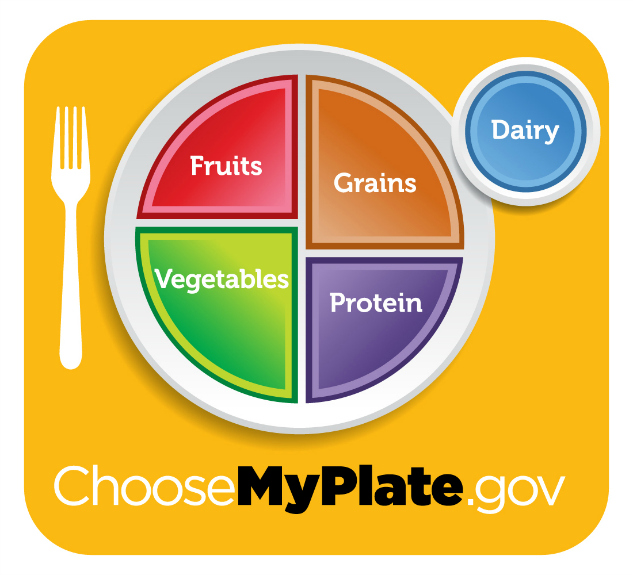Professional chefs work hard to create meals that not only taste excellent, but look just as great as they taste. No one can deny that a nicely plated meal looks more appetizing, but did you also know it’s healthier for your family? Buffet setups and family-style eating typically lead to second and third servings. We tend to pile on too much of certain food groups. The health benefits of plating your meal instead of serving family-style (or buffet) include improved portion control and better balance of a variety of foods.
Much detail and practice goes into mastering the art of food presentation, but there are easy ways for you to create healthy plates with an artistic touch. Here are some ways to help you dress up your plate with textures and colors to make your family meals look more appetizing.
Use MyPlate when planning and plating your meals.
Plan your plate to include a serving from the main food groups: vegetables, fruits, proteins, whole grains, and dairy (unless you have allergies to any of these food groups).
Vegetables/fruits
Choose a variety of fresh, colorful, and in-season fruits and vegetables. Half your plate will be fruits and vegetables, so the color splash from these food groups will have a big nutritional impact. Steam or lightly sauté vegetables so they keep their vibrant colors. Overcooked vegetables tend to lose their visual appeal and texture.
Proteins
Aim for a 3 oz. portion-size of protein, which is about the size of your palm. Cube proteins and thread pieces on skewers before cooking or slice cooked meats before placing them on the plate. Play with textures by topping proteins with fruit salsa, lemon slices, or cheese crumbles.
Grains
Round out the final quarter of your plate with whole grains such as quinoa, whole wheat tortillas, or brown rice. Dress up your whole grains by tossing 1-2 tablespoons of chopped, fresh herbs such as basil, parsley, or cilantro just before serving.
Dairy
The dairy group is often represented in recipes by adding cheese or milk to a dish or serving it is a beverage. A light sprinkle of cheese crumbles is tasty addition to salads or a splash of milk added to vegetable purees will create a creamier texture.
Presentation matters
There’s no need to spend hours creating a masterpiece on your dinner plate, but several studies prove that offering a plate full of colors, textures, and creativity in the presentation make food more enjoyable.
Tips for plating your food like a pro
- White, large rimmed plates make food look best.
- As a general guide, visualize a clock on your plate with fruits and vegetable placed from 7 to 1 o’clock, grain placed at 1 to 4 o’clock and proteins at 4 to 7 o’clock.
- Pour dressings into squeeze bottles and drizzle salad dressing horizontally for a geometric finish.
- Add a little height to your plate by layering grains under the protein or leaning vegetables against the grains or proteins.
- Spoon sauces or gravy on the bottom of the plate not over the food. Vegetable purees (aka homemade baby food) can add color, a smooth texture and extra nutrition. Use vegetable purees like sauces by plating then under the food.
- When there is room, finish your plate with a healthy garnish, like a slice of citrus, sprig of parsley, or a couple basil leaves.
You don’t have to be a professionally trained chef to perk up a plate. Even the simplest finishing touches can provide you, your family, and guests with a beautiful culinary experience.
This Week's Articles Read, learn, live
-
 Summertime grilled vegetables
Summertime grilled vegetables
-
 5 Ways to make this summer full of unforgettable family fun
5 Ways to make this summer full of unforgettable family fun
-
 10 Reasons to take a family vacation in Puerto Vallarta
10 Reasons to take a family vacation in Puerto Vallarta
-
 5 Fun tips for spring cleaning with kids
5 Fun tips for spring cleaning with kids
-
 10 chick flicks with New Year’s Eve scenes
10 chick flicks with New Year’s Eve scenes
-
 The day after Christmas: 5 ways to handle the biggest downer of the year
The day after Christmas: 5 ways to handle the biggest downer of the year

